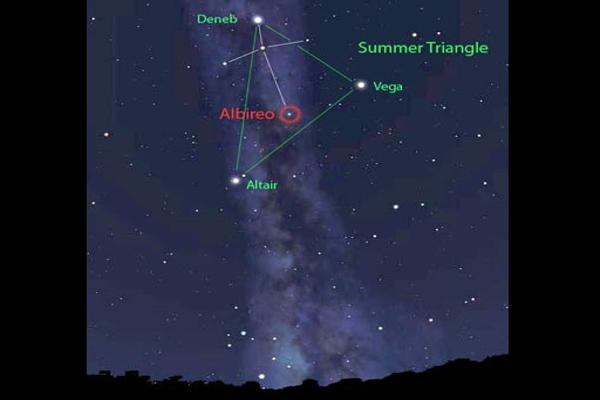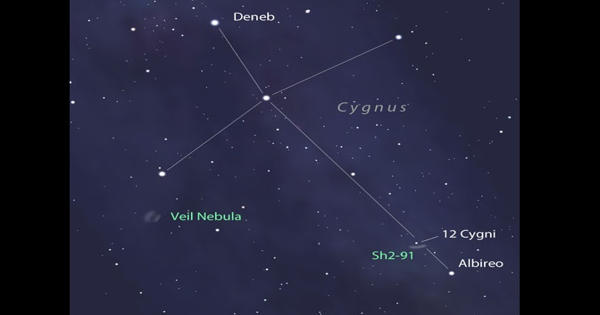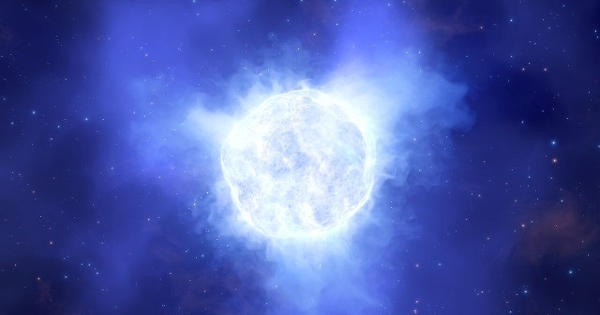Albireo, also called Beta Cygni, is a binary star found in the Cygnus constellation. It isn’t the brightest star in the sky. It looks like an ordinary single star to the eye. It consists of two stars, a yellow giant called Albireo Aa and a blue main sequence star named Albireo Ac. With a telescope, you’ll easily see Albireo as a beautiful double star, with the brighter star gold and the dimmer star blue. Another blue star named Albireo B could be part of the system. It appears as a single star to the naked eye but is in fact a binary system with two components that can be seen in a small telescope.
Albireo is a double star of the third magnitude that is the fifth brightest star in the constellation Cygnus.
Beta Cygni is about 415 light-years (127 pc) away from the Sun. When viewed with the naked eye, Albireo appears to be a single star. Cygnus has an easy-to-recognize shape, that of a cross, and the constellation is also known as the Northern Cross. However, in a telescope, it resolves into a double star consisting of β Cygni A (amber, apparent magnitude 3.1), and β Cygni B (blue-green, apparent magnitude 5.1). The two stars of Albireo constitute a true binary star system. In other words, its two stars aren’t merely a chance alignment as seen from Earth. Separated by 35 seconds of arc, the two components provide one of the best contrasting double stars in the sky due to their different colors. Instead, they revolve around a common center of mass.
It is not known whether the two components β Cygni A and B are orbiting around each other in a physical binary system, or if they are merely an optical double. These two stars lie quite far apart, however, and might take as long as 100,000 years to orbit one another. If they are a physical binary, their orbital period is probably at least 100,000 years. Even though these two stars appear close together in a telescope, keep in mind that you’re looking at a system that’s 430 light-years away.

Some experts, however, support the optical double argument, based on observations that suggest different proper motions for the components, which implies that they are unrelated. By the way, the brighter of the two stars in the Albireo system has been found with advanced telescopic techniques to be two stars as well. Thus there are at least three stars in this system. The primary and secondary also have different measured distances from the Hipparcos mission – 434 ± 20 light-years (133 ± 6 pc) for the primary and 401 ± 13 light-years (123 ± 4 pc) for the secondary.
More recently the Gaia mission has measured distances of about 330–390 light-years (100–120 parsecs) for both components, but noise in the astrometric measurements for the stars means that data from Gaia’s second data release is not yet sufficient to determine whether the stars are physically associated. The star Albireo – also known as Beta Cygni – in the constellation Cygnus, is a famous double star. A small telescope reveals that one star is blue and the other is gold.
Information Source:
















